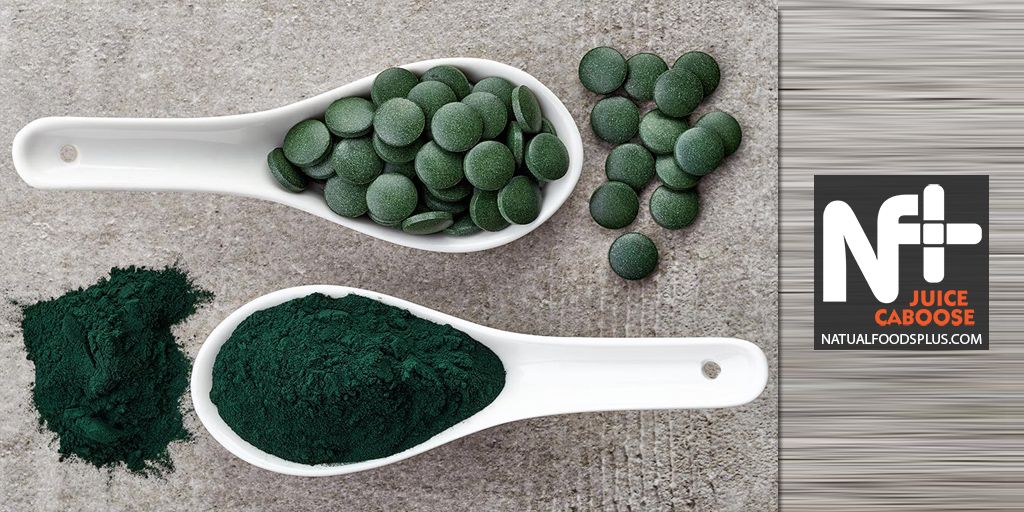
Health Benefits of Spirulina
Spirulina Is Extremely High in Many Nutrients
Spirulina is an organism that grows in both fresh and salt water.
It is a type of cyanobacteria, which is a family of single-celled microbes that are often referred to as blue-green algae.
Just like plants, cyanobacteria can produce energy from sunlight via a process called photosynthesis.
Spirulina was consumed by the ancient Aztecs but became popular again when NASA proposed that it could be grown in space for use by astronauts.
A standard daily dose of spirulina is 1–3 grams, but doses of up to 10 grams per day have been used effectively.
This tiny alga is packed with nutrients. A single tablespoon (7 grams) of dried spirulina powder contains:
- Protein: 4 grams
- Vitamin B1 (thiamine): 11% of the RDA
- Vitamin B2 (riboflavin): 15% of the RDA
- Vitamin B3 (niacin): 4% of the RDA
- Copper: 21% of the RDA
- Iron: 11% of the RDA
It also contains decent amounts of magnesium, potassium and manganese and small amounts of almost every other nutrient that you need.
In addition, the same amount holds only 20 calories and 1.7 grams of digestible carbs.
Gram for gram, spirulina may be the single most nutritious food on the planet.
A tablespoon (7 grams) of spirulina provides a small amount of fat — around 1 gram — including both omega-6 and omega-3 fatty acids in an approximately 1.5–1.0 ratio.
The quality of the protein in spirulina is considered excellent — comparable to eggs. It gives all the essential amino acids that you need.
It is often claimed that spirulina contains vitamin B12, but this is false. It has pseudovitamin B12, which has not been shown to be effective in humans (3, 4).
SUMMARY
Spirulina is a type of blue-green algae that grows in both salt and fresh water. It may be one of the most nutrient-dense foods on earth.
Powerful Antioxidant and Anti-Inflammatory Properties
Oxidative damage can harm your DNA and cells.
This damage can drive chronic inflammation, which contributes to cancer and other diseases.
Spirulina is a fantastic source of antioxidants, which can protect against oxidative damage.
Its main active component is called phycocyanin. This antioxidant substance also gives spirulina its unique blue-green color.
Phycocyanin can fight free radicals and inhibit production of inflammatory signaling molecules, providing impressive antioxidant and anti-inflammatory effects.
SUMMARY
Phycocyanin is the main active compound in spirulina. It has powerful antioxidant and anti-inflammatory properties.
Can Lower “Bad” LDL and Triglyceride Levels
Heart disease is the world’s leading cause of death.
Many risk factors are linked to an increased risk of heart disease.
As it turns out, spirulina positively impacts many of these factors. For example, it can lower total cholesterol, “bad” LDL cholesterol and triglycerides, while raising “good” HDL cholesterol.
In a study in 25 people with type 2 diabetes, 2 grams of spirulina per day significantly improved these markers.
Another study in people with high cholesterol determined that 1 gram of spirulina per day lowered triglycerides by 16.3% and “bad” LDL by 10.1%.
Several other studies have found favorable effects — though with higher doses of 4.5–8 grams per day.
SUMMARY
Studies indicate that spirulina can lower triglycerides and “bad” LDL cholesterol and may simultaneously raise “good” HDL cholesterol.
Protects “Bad” LDL Cholesterol From Oxidation
Fatty structures in your body are susceptible to oxidative damage.
This is known as lipid peroxidation, a key driver of many serious diseases.
For example, one of the key steps in the development of heart disease is the oxidation of “bad” LDL cholesterol.
Interestingly, the antioxidants in spirulina appear to be particularly effective at reducing lipid peroxidation in both humans and animals.
In a study in 37 people with type 2 diabetes, 8 grams of spirulina per day significantly reduced markers of oxidative damage. It also increased levels of antioxidant enzymes in the blood.
SUMMARY
Fatty structures in your body can become oxidized, driving the progression of many diseases. The antioxidants in spirulina can help prevent this.
May Have Anti-Cancer Properties
Some evidence suggests that spirulina has anti-cancer properties.
Research in animals indicates that it can reduce cancer occurrence and tumor size.
Spirulina’s effects on oral cancer — or cancer of the mouth — have been particularly well studied.
One study examined 87 people from India with precancerous lesions — called oral submucous fibrosis (OSMF) — in the mouth.
Among those who took 1 gram of spirulina per day for one year, 45% saw their lesions disappear — compared to only 7% in the control group.
When these people stopped taking spirulina, almost half of them redeveloped lesions in the following year.
In another study of 40 individuals with OSMF lesions, 1 gram of spirulina per day led to greater improvement in OSMF symptoms than the drug Pentoxyfilline.
SUMMARY
Spirulina may have anti-cancer properties and appears especially effective against a type of precancerous lesion of the mouth called OSMF.
May Reduce Blood Pressure
High blood pressure is a main driver of many serious diseases, including heart attacks, strokes and chronic kidney disease.
While 1 gram of spirulina is ineffective, a dose of 4.5 grams per day has been shown to reduce blood pressure in individuals with normal levels.
This reduction is thought to be driven by an increased production of nitric oxide, a signaling molecule that helps your blood vessels relax and dilate.
SUMMARY
A higher dose of spirulina may lead to lower blood pressure levels, a major risk factor for many diseases.
Our signature smoothie, The Emerald Treasure, is sweetened with organic agave nectar and packed with superfoods like spirulina, wheatgrass, and alfalfa. The addition of plant based protein makes it a complete meal with a dynamic nutritional profile.
